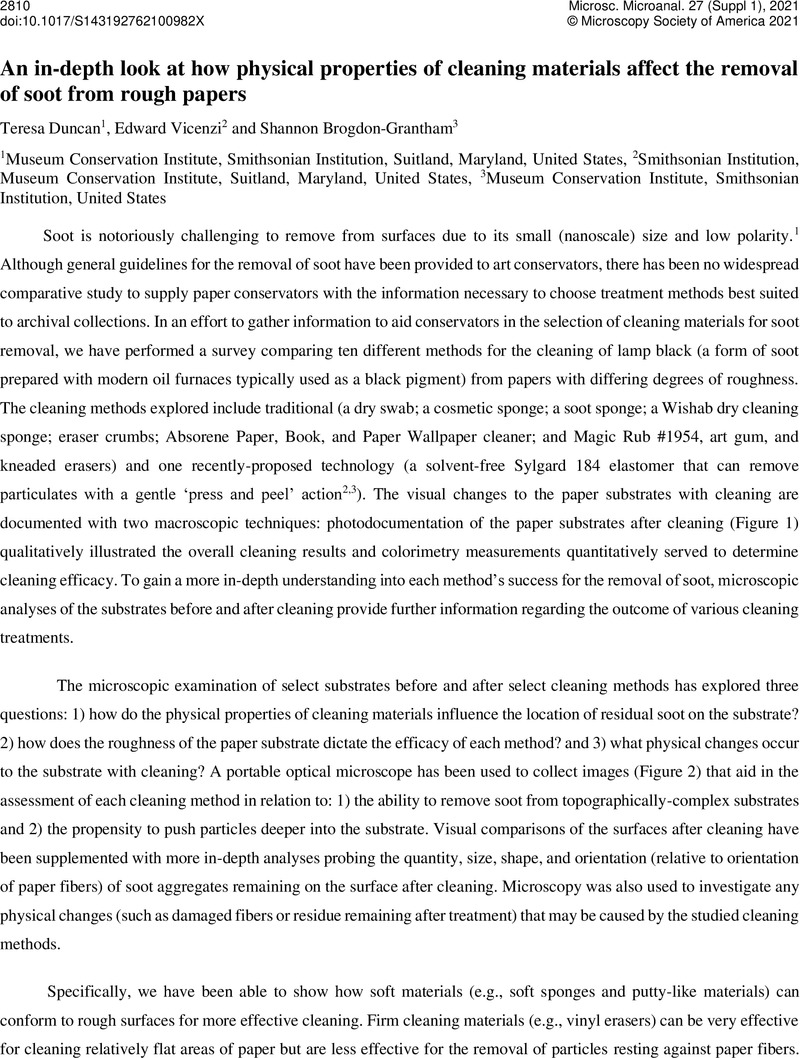No CrossRef data available.
Article contents
An in-depth look at how physical properties of cleaning materials affect the removal of soot from rough papers
Published online by Cambridge University Press: 30 July 2021
Abstract
An abstract is not available for this content so a preview has been provided. As you have access to this content, a full PDF is available via the ‘Save PDF’ action button.

- Type
- Portable- and Laboratory-based Approaches to Analysis in Cultural Heritage
- Information
- Copyright
- Copyright © The Author(s), 2021. Published by Cambridge University Press on behalf of the Microscopy Society of America
References
Duncan, T. T.; Chan, E. P.; Beers, K. L. Maximizing Contact of Supersoft Bottlebrush Networks with Rough Surfaces to Promote Particulate Removal. ACS Appl. Mater. Interfaces 2019, 11 (48), 45310–45318. https://doi.org/10.1021/acsami.9b17602.Google ScholarPubMed
Duncan, T. T.; Chan, E. P.; Beers, K. L. Quantifying the Press and Peel Removal of Particulates Using Elastomers and Gels. J. Cult. Herit. In press. https://doi.org/10.1016/j.culher.2020.11.004.Google Scholar
Pearlstein, E. J.; Cabelli, D.; King, A.; Indictor, N. Effects of Eraser Treatment on Paper. J. Am. Inst. Conserv. 1982, 22 (1), 1–12.CrossRefGoogle Scholar



